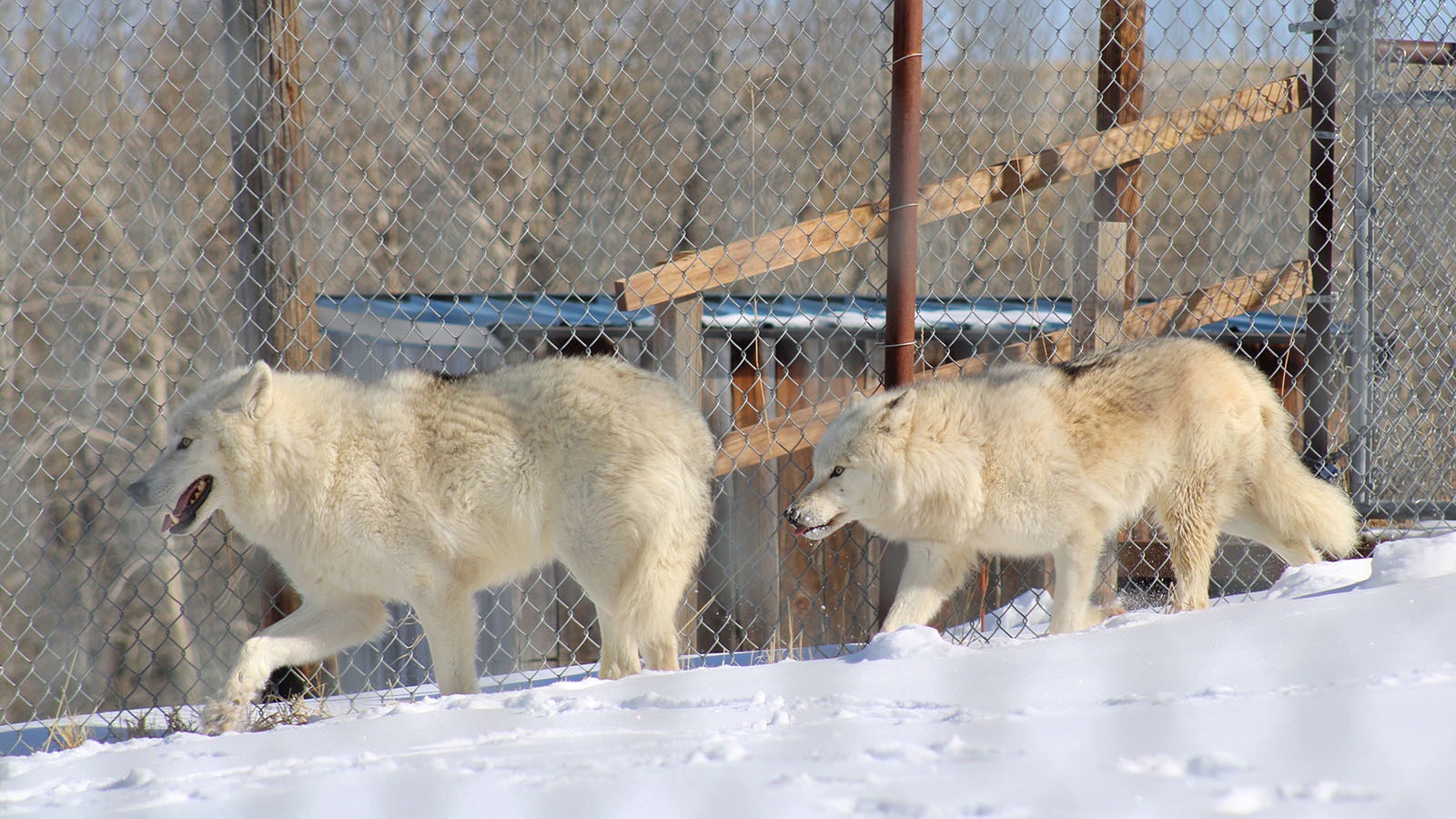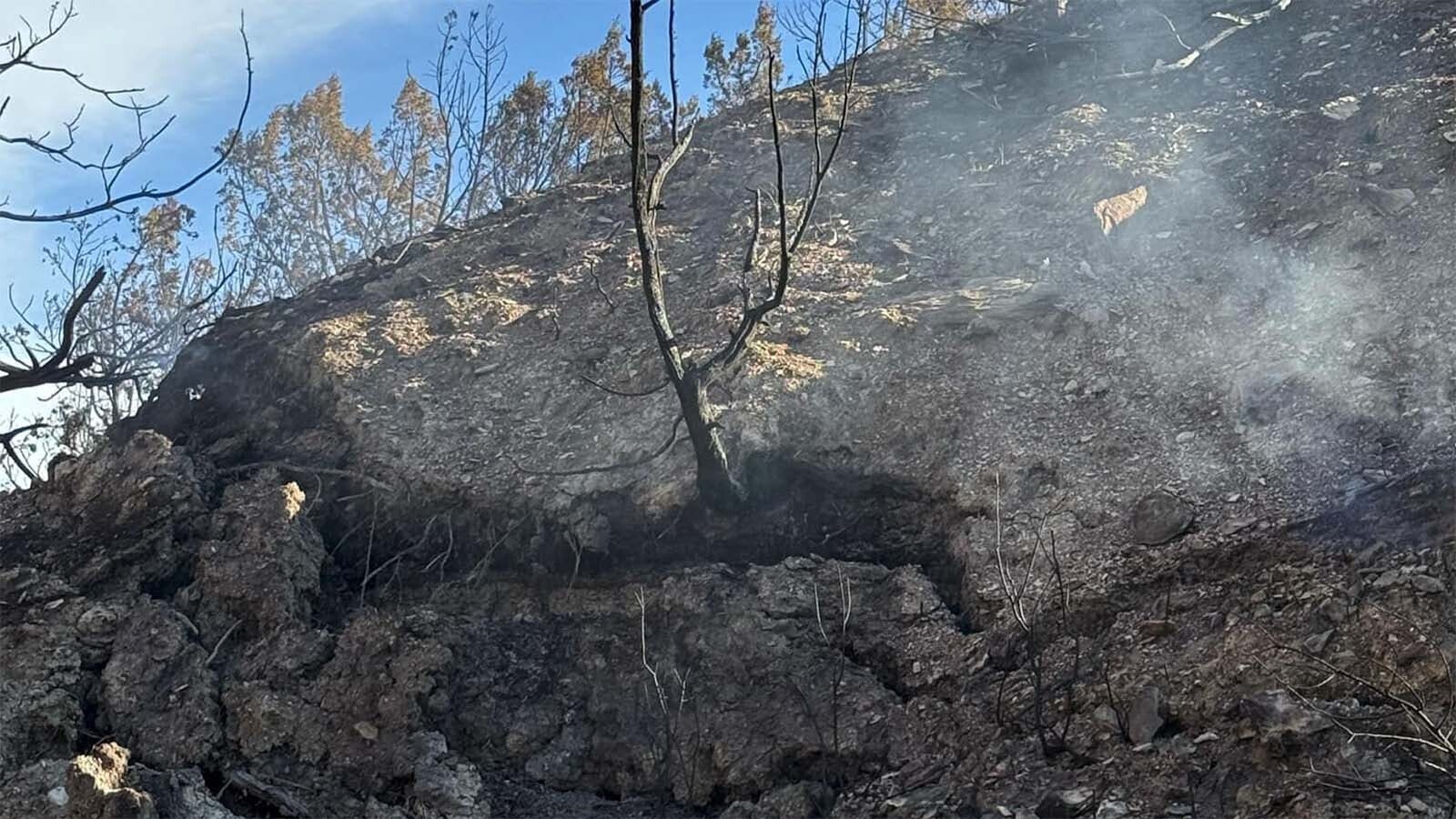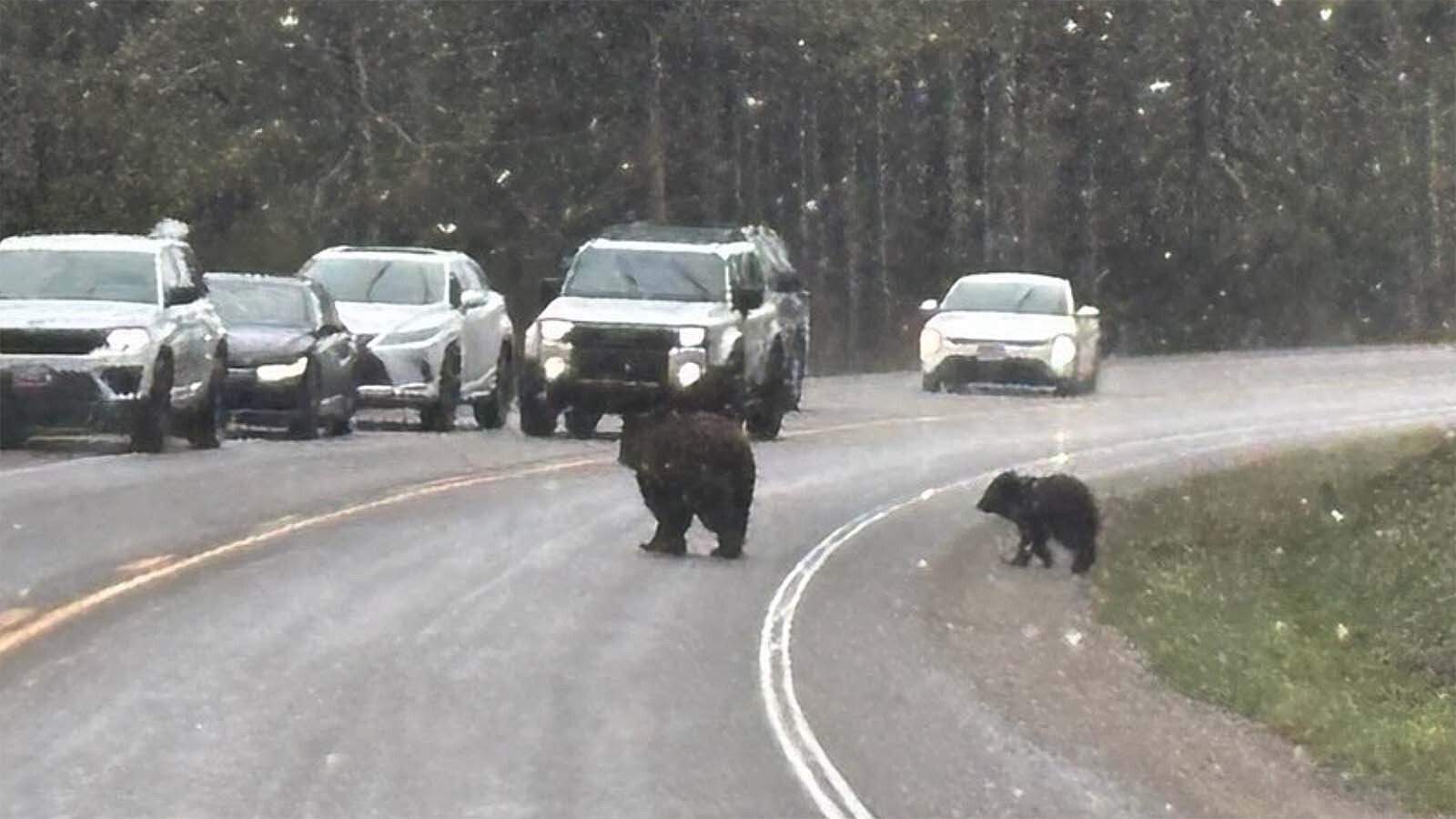CODY — Pilot and Index are familiar names around northwestern Wyoming, as they identify two iconic and frequently photographed peaks in the Absaroka Range just east of the Northeast Entrance to Yellowstone National Park.
But a pair of gray wolves named after the peaks also will likely be appearing on Instagram reels and trending TikTok videos this summer after arriving earlier this month to their new home in Red Lodge, Montana.
The Yellowstone Wildlife Sanctuary welcomed the wolves from their temporary stay at an animal rehabilitation facility in Ontario, Canada.
Pilot, a male, and Index, a female, are siblings, said BR Walker, YWS executive director.
They were part of two litters of wolves removed from a roadside animal menagerie where they were born. It was shut down by Canadian law enforcement because of substandard care and living conditions, Walker said.
Because Pilot and Index had never lived in the wild, they were not good candidates for being released, and will “enjoy a better quality of life as YWS residents,” said Izzy Sommerdorf, animal care manager for the sanctuary.

Debut In April
The wolves are under quarantine for the next two weeks to protect against transmitting disease and allow them to adapt to their new environment with minimal stress. They will make their debut to YWS members April 5-6 and to the general public April 7.
The accredited, nonprofit facility has been home since 1983 to a variety of animals found across the Greater Yellowstone Ecosystem that are unable to live in the wild. Its residents range from raccoons and raptors to bobcats and black bears.
But wolves have been crowd favorites, Walker said.
Ginny and Dakota, siblings that were wolf and Alaskan Malamute hybrids “were star attractions with brown eyes that could give you a puppy dog look,” she said. “But these two are 100% gray wolves with sparkling gold eyes, and they’re already proving pretty charming in their own ways.”
Ginny and Dakota died in 2022, but not before climbing a snow drift to briefly escape their enclosure in 2020. Among the improvements YWS made for Pilot and Index were adding taller fences, Walker said.
Work begins next month on a new service building and water main for their enclosure.
Chuck Hulbert, a plumber from Cody, said the wolves would be a great addition for the sanctuary, where he has been a frequent visitor over the last two decades.
“They definitely have a good spot for them there,” he said. “We used to especially go there quite a bit when my daughter, Sara, was younger. It was always one of her favorite places to go to see all the animals.”

Perfect Names
Walker said the Sanctuary is working to attract new visitors and supporters from Cody and other Bighorn Basin communities, and she expects Pilot and Index to help with that effort.
Naming the wolves after Wyoming summits visible from the Beartooth Highway between Cody and Red Lodge was a carefully considered choice.
“We just felt like they needed to be named for this whole area, and those two peaks were just perfect,” she said.
Took More Than A Year To Get Them
Estimates vary, but tourism officials say that wolf-watching brings in more than $30 million annually to the regional economy.
Walker said the complicated process of receiving the wolves took an entire year, in large part because of the thicket of bureaucratic paperwork involved in transporting them across an international border and five U.S. states.
“There weren’t check-boxes on a lot of the transport applications for ‘live wolf,’ so we had to work our way through many different agencies that had no process in place for any of this,” she said.
Wolf Revival
Gray wolves were almost entirely eliminated from the Lower 48 states by the mid-1900s. In 1995, the U.S. Fish and Wildlife Service released 14 wolves captured in Canada into Yellowstone as part of an ongoing restoration program that has been politically divisive since.
The agency estimates that as of 2022, there were about 2,800 wolves distributed across at least 286 packs in seven Western states. Wyoming has managed wolf populations within its borders outside of Yellowstone since 2017.
The animals generally remain elusive and wary of human contact, making them a tough species for wildlife watchers to see, and are often only visible from a distance with spotting scopes or binoculars.
That may help explain their popularity among local and visiting wolf enthusiasts at the Yellowstone Wildlife Sanctuary, where they’re likely to receive a warmer welcome than the 14 wolves from Canada that arrived some 50 miles away almost three decades ago.





